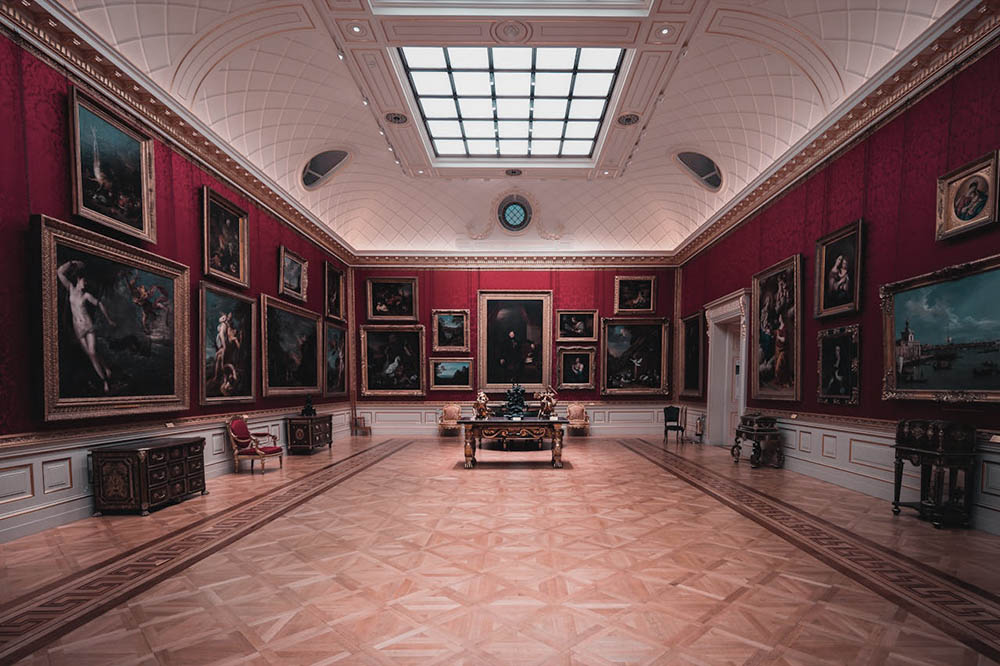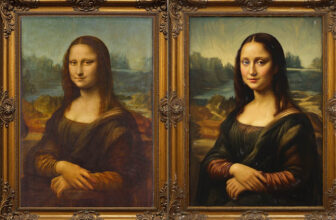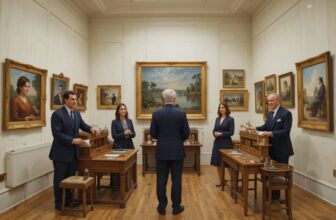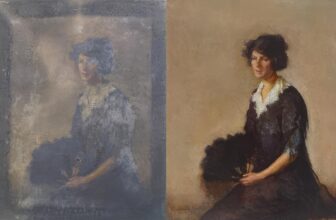
How to Build a Classic Collection That Lasts Generations
A Complete Guide
Art collecting has always been one of the most prestigious pursuits in human culture. From Renaissance royalty to modern magnates, collectors have used art not only to beautify their surroundings but also to assert influence, secure cultural legacy, and participate in an ongoing dialogue with history. But building a prestigious classic art collection is not merely about purchasing expensive works, it is about curation, vision, education, and legacy.
This guide explores what makes a great art collection, how to curate one thoughtfully, and how to navigate the intricate world of classical art collecting in the 21st century.
Why Collect Classic Art?
Before diving into the “how,” it’s important to ask “why.” What draws people to collect classical works of art when contemporary markets often offer higher visibility and faster returns?
Historical Value
Classic art, Renaissance paintings, Baroque sculptures, 19th-century landscapes, connects us directly with the cultural milestones of the past. Owning such works means preserving fragments of history.Cultural Prestige
A classic art collection signals taste, erudition, and sophistication. Collectors are often seen as custodians of culture rather than just buyers.Investment Potential
While contemporary art markets fluctuate, works by established masters of past centuries tend to hold value, and many appreciate steadily over time.Personal Enrichment
Living with art enriches daily life. Collectors develop deeper relationships with history, philosophy, and aesthetics.
What Makes a Great Art Collection?
A prestigious art collection isn’t measured by how much money is spent but by vision, coherence, and curatorial discipline. Here are the hallmarks of a great collection:
1. Cohesion of Theme or Period
Great collections tell a story.
Some collectors focus on a single period (e.g., Italian Renaissance), while others highlight a theme (religious iconography, portraiture, or mythological scenes).
Cohesion distinguishes a prestigious collection from a random assortment.
2. Quality over Quantity
A small number of exceptional works surpasses a warehouse of mediocre ones.
Prestige comes from discernment, acquiring fewer but significant pieces.
3. Authenticity and Provenance
Verified provenance (ownership history) enhances credibility and value.
Documentation ensures the work is genuine and traceable, reducing risks of forgery.
4. Curatorial Depth
Depth involves having representative works across different phases of a style or artist’s career.
For instance, a collection of Dutch Golden Age paintings is stronger if it shows both portraiture and landscapes, light studies and religious motifs.
5. Cultural Dialogue
Prestigious collections don’t live in isolation. They are loaned to museums, exhibited internationally, and published in catalogs.
Engagement with institutions enhances both reputation and historical relevance.
Step 1: Define Your Vision and Collecting Goals
The first step to building a prestigious collection is defining your artistic vision.
Ask yourself:
Do I want to focus on a specific period (Renaissance, Rococo, Romanticism)?
Am I drawn to a specific genre (portraiture, still life, religious art, landscapes)?
Am I motivated by cultural legacy, personal passion, or financial investment?
Tip: Write a personal manifesto for your collection. Articulating your vision will guide future acquisitions and help avoid impulsive purchases.
Step 2: Educate Yourself in Art History
No collection can be prestigious without deep knowledge behind it.
Essential Areas of Study:
Movements & Styles: Renaissance, Baroque, Neoclassicism, Romanticism, Realism, Impressionism.
Key Artists: From Giotto to Caravaggio, Rubens to Goya, Turner to Bouguereau.
Cultural Context: Understanding historical events, patronage systems, and religious influences helps interpret the works.
How to Learn:
Read art history texts and catalogs.
Take courses at universities or museums.
Attend lectures, symposiums, and guided tours.
Visit museums worldwide, not just local ones, to see canonical works in person.
Step 3: Build Relationships in the Art World
Art collecting is a social pursuit. A prestigious collection thrives within networks of expertise.
Who to Know:
Dealers & Galleries – They provide access to artworks on the market.
Auction Houses – Sotheby’s, Christie’s, Bonhams, and regional houses are key marketplaces.
Scholars & Historians – They help validate attributions and provide historical context.
Restorers & Conservators – Essential for maintaining artwork quality.
Other Collectors – Peer networks often lead to opportunities, loans, and collaborations.
Tip: Develop trust-based relationships. Prestige comes not only from what you buy but from who advises you and how responsibly you steward your collection.
Step 4: Understand Authentication and Provenance
The reputation of a collection depends on authenticity. With classic art, forgeries and misattributions are common.
Checklist for Authentication:
Provenance Records: Ownership history, previous auctions, and exhibitions.
Expert Attributions: Validation by recognized scholars.
Technical Analysis: Infrared reflectography, pigment testing, and X-ray imaging to confirm period accuracy.
Condition Reports: Assess restorations, damages, or alterations.
Prestigious collectors never gamble on authenticity, they invest in documentation.
Step 5: Acquire with Strategy
Where to Acquire:
Auctions: Provide access to high-quality, vetted works but require competitive bidding.
Dealers & Galleries: Offer private sales, often with curated expertise.
Estate Sales & Smaller Auctions: Sometimes overlooked treasures appear here.
Direct from Families or Institutions: Rare but highly prestigious.
Acquisition Tips:
Set a budget framework, both overall and per piece.
Don’t rush: acquisitions should align with your collection’s vision.
Focus on quality, not trend-driven purchases.
Consider both masterworks and supporting works, a strong collection often balances highlights with contextual pieces.
Step 6: Curation, The Heart of Collecting
Curating your collection transforms it from ownership into cultural expression.
Principles of Curation:
Narrative Flow
Arrange works to tell a story: stylistic evolution, thematic resonance, or dialogue between artists.
For instance, pairing a Raphael Madonna with a later Romantic reinterpretation creates historical continuity.
Diversity within Cohesion
A strong collection balances variety with consistency.
Different genres (portrait, landscape, still life) enrich a focused theme.
Documentation
Maintain detailed catalogs with photographs, provenance, and scholarly notes.
Cataloging elevates a private collection to scholarly status.
Exhibition Readiness
Prestigious collections are curated with museum standards in mind, making them suitable for loans and publications.
Step 7: Preservation and Conservation
Art is fragile. Owning classic works means becoming their guardian.
Key Practices:
Climate Control: Maintain stable humidity and temperature.
Lighting: Avoid direct sunlight and harsh artificial lights.
Handling: Use professionals for moving and installation.
Insurance: Comprehensive coverage protects against theft, fire, and accidents.
Restoration: Only by accredited conservators; poor restoration can ruin both aesthetic and value.
Step 8: Showcase Your Collection
How you present your collection shapes its prestige.
Display Options:
Private Gallery Spaces: Dedicated rooms or salons in your residence.
Loans to Museums: Elevates the collection’s reputation and supports public education.
Catalog Publications: Commission high-quality photography and scholarly essays.
Digital Platforms: Create a digital archive or VR exhibition for accessibility.
Prestige grows when a collection is seen, studied, and celebrated.
Step 9: Evolving the Collection
A great collection is never static. It evolves as your knowledge deepens and your tastes refine.
Regularly reassess: Some works may no longer fit your vision.
Upgrade strategically: Trade lesser works for stronger examples.
Collaborate: Partner with museums or scholars for exhibitions.
Expand cautiously: Add works that enhance narrative rather than dilute it.
Step 10: Legacy and Philanthropy
The most prestigious collections are those that outlive their owners.
Donation to Museums: Many legendary collections became public treasures this way.
Foundations & Trusts: Establishing a private foundation ensures preservation and scholarly access.
Catalog Raisonné Contribution: Supporting scholarly publications enshrines your collection in academic history.
Educational Programs: Hosting lectures or scholarships tied to your collection builds cultural capital.
Prestige is not only about possession, it is about stewardship and contribution.
Challenges in Classic Art Collecting
While rewarding, this pursuit comes with challenges:
Scarcity of Masterworks
Many canonical works are already in public museums. Private collectors often compete fiercely for the few available.
Risk of Forgery
Classic art is a prime target for sophisticated fakes. Vigilance is crucial.
Market Volatility
While generally stable, certain artists’ markets can fluctuate.
High Maintenance Costs
Conservation, insurance, and security require significant investment.
Ethical Considerations
Collectors must be wary of looted art, colonial-era acquisitions, and contested ownerships.
The Modern Context of Classic Art Collecting
In the 21st century, classic art collecting intersects with new realities:
Globalization: Collectors come from all corners of the world, increasing competition for prized works.
Digital Cataloging: Provenance research and catalogs are increasingly digital.
NFTs & Digital Art: While futuristic, they have indirectly heightened interest in tangible, historical works.
Cultural Restitution Movements: Collectors must be mindful of artworks with contested origins.
Sustainability: Loans and transport are now judged for environmental impact.
Prestige today means responsible, ethical collecting as much as aesthetic discernment.
The Art of Collecting
Building a prestigious classic art collection is an intellectual, cultural, and ethical journey. At its best, it transcends the realm of investment and becomes a contribution to human heritage.
A great collection:
Tells a story.
Reflects discernment and vision.
Is authenticated, preserved, and responsibly displayed.
Engages with the cultural community.
Lives on as a legacy for future generations.
Collecting is not simply about owning art, it is about living with history, shaping culture, and passing on beauty. The collector becomes not just a buyer but a custodian of civilization’s treasures.




